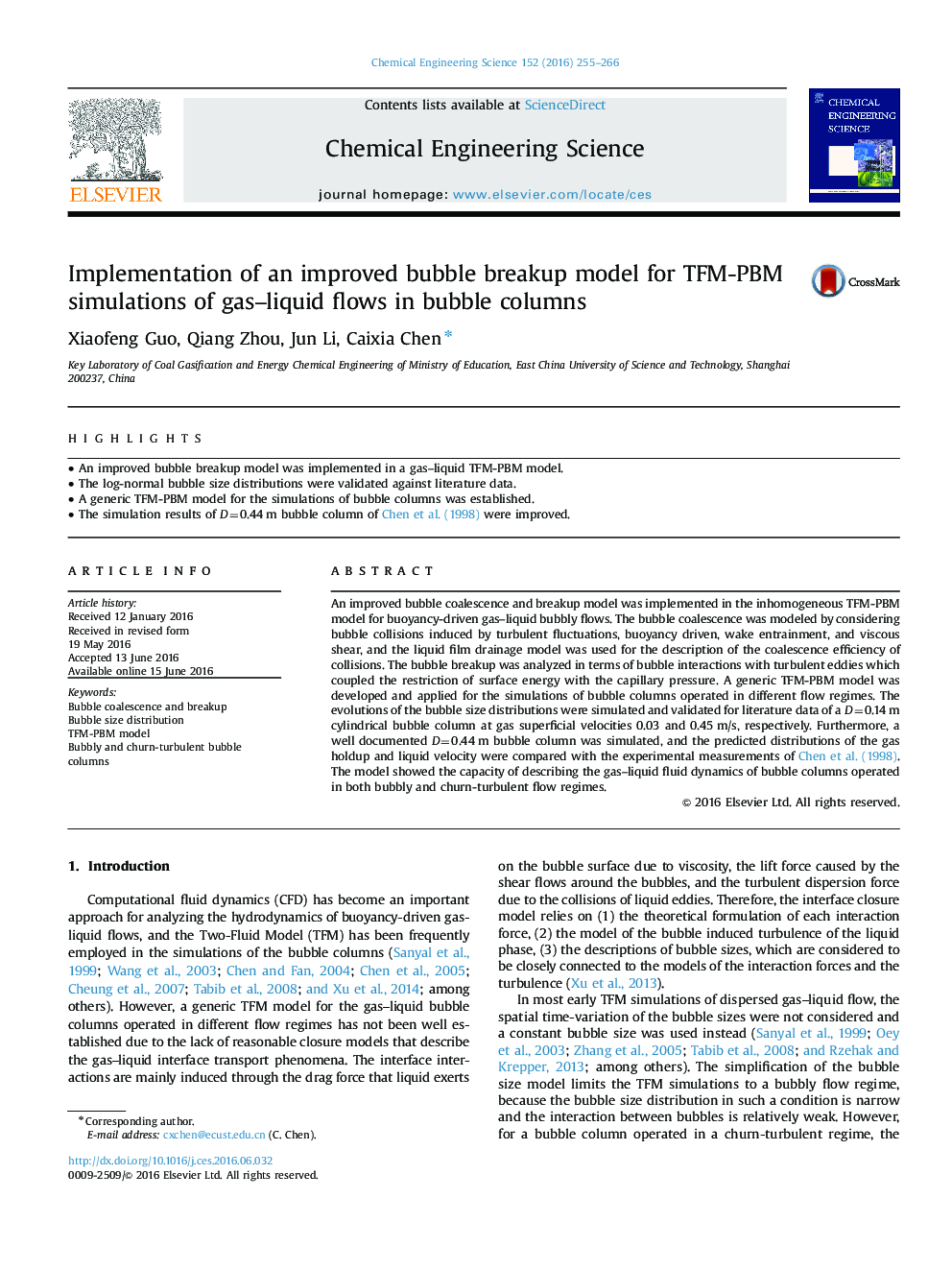| Article ID | Journal | Published Year | Pages | File Type |
|---|---|---|---|---|
| 6589071 | Chemical Engineering Science | 2016 | 12 Pages |
Abstract
An improved bubble coalescence and breakup model was implemented in the inhomogeneous TFM-PBM model for buoyancy-driven gas-liquid bubbly flows. The bubble coalescence was modeled by considering bubble collisions induced by turbulent fluctuations, buoyancy driven, wake entrainment, and viscous shear, and the liquid film drainage model was used for the description of the coalescence efficiency of collisions. The bubble breakup was analyzed in terms of bubble interactions with turbulent eddies which coupled the restriction of surface energy with the capillary pressure. A generic TFM-PBM model was developed and applied for the simulations of bubble columns operated in different flow regimes. The evolutions of the bubble size distributions were simulated and validated for literature data of a D=0.14Â m cylindrical bubble column at gas superficial velocities 0.03 and 0.45Â m/s, respectively. Furthermore, a well documented D=0.44Â m bubble column was simulated, and the predicted distributions of the gas holdup and liquid velocity were compared with the experimental measurements of Chen et al. (1998). The model showed the capacity of describing the gas-liquid fluid dynamics of bubble columns operated in both bubbly and churn-turbulent flow regimes.
Related Topics
Physical Sciences and Engineering
Chemical Engineering
Chemical Engineering (General)
Authors
Xiaofeng Guo, Qiang Zhou, Jun Li, Caixia Chen,
